There are zillions of posts on the Internet that will tell you what your website should look like.
But what if you’re an author? Does all that advice meant for businesses and twenty-something entrepreneurs apply to you?
Yes and no. Confusing, eh?
What’s missing in all the advice out there is information about a page on your website dedicated for your books. And if you want to generate more reader interest, at least one romance author I’ve met includes a page for her readers’ book club.
But let’s cover the basics first.
Is Your Website Mobile-Friendly?
The Internet is mobile. Gone are the days when people primarily sat at their desks to search for a product on Google or check their Facebook profiles.
People are on the move, and that means they are using their smartphones and tablets for their Internet browsing rather than their desktop computers – if they even have one.
If you’re not sure whether your website is mobile-friendly, go to Google’s test page. If you fail the test, notify your webmaster.
Infinite Scrolling
Infinite scrolling makes viewing a website on a smartphone or tablet easier.
Instead of clicking tabs that take you to an About page or Services page, with this type of website you just keep scrolling downward to see all of the website’s content.
The downside? Loading this type of website can sometimes take longer.
However, if you write picture books or books that target young adult readers, infinite scrolling is a good option for your next website. All it takes is a swipe of the thumb to read about your books. Younger readers who grew up with the Internet and social media are more accustomed to swiping.
Another benefit to infinite scrolling is that you can incorporate 3-D technology.
Elements of an Author Website
Do you hope to attract a publisher? Or, are you happy as an Indie author?
However you answer that question, the answer applies to all authors. Do everything you can to build your email list.
Wait a minute; you’re probably wondering why someone who handles social media for authors as a living would first plunge into the topic of email lists. The answer is this: email marketing is still more effective than social media.
Email marketing enables you to communicate with your readers absent a third-party application such as Instagram or Twitter.
On every single page of your website, you need to include an email opt-in that entices readers with a giveaway.
For fiction authors, that freebie might be the first chapter of your newest book, or if you’ve written several books, it might be a PDF of your first book.
For nonfiction authors, the giveaway might be a tips sheet. I have several giveaways on my website: a social media sheet cheat, a PDF of my eBook on Twitter, and a list of my favorite marketing books and novels. What can you give away?
Now let’s look at what else you should include on your author website:
- Blog
- About page
- Page(s) about your books
- Contact page
- Social media icons
Here are some optional pages:
- Media kit/press page
- Testimonials/reviews
And if you want to become a speaker, you’ll need a page that lists all of your current speaking commitments and information on how to contact you for future speaking gigs.
If you want to make your website more reader-centric, you can also do that. I know of a picture book author who has an activities page with coloring books the author creates and that parents can download for their children.
Analysis of Author Book Pages
Let’s look at a few author websites and their book pages, starting with Christian Picciolini’s site. Christian has an amazing story. Born to Italian immigrants in Chicago, he joined the White Supremacist movement as a teen and left it when he was in his early twenties.
Since that time, he has devoted his life to tolerance through a variety of media and a nonprofit, Life After Hate. He recently wrote his memoir, Romantic Violence.
His book page provides a summary, a video, links to where you can purchase it, and numerous reviews. He also includes a link so you can add the book to your Goodreads bookshelf.
Here is the first half of his page:
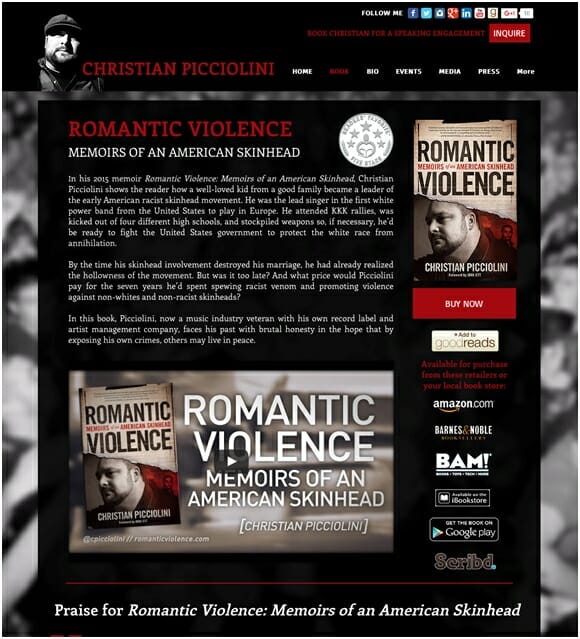
The bottom half is filled with stellar reviews.
Robert Lane’s home page promotes his newest book and his books page promotes all three of his novels with links to additional information about them. The header images represent the venue for where his stories take place.
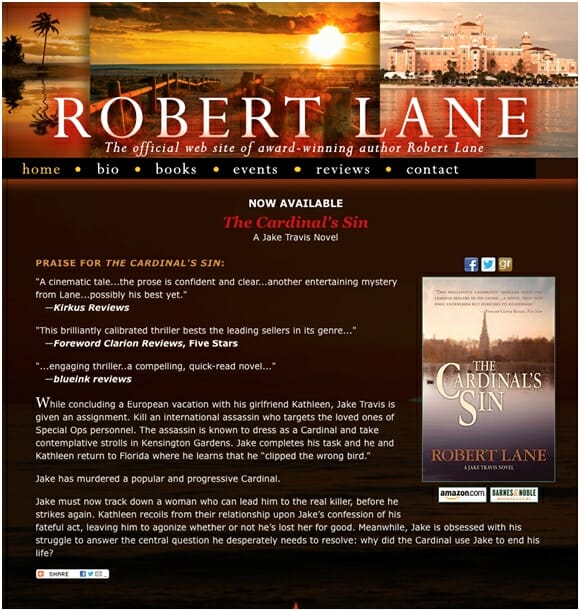
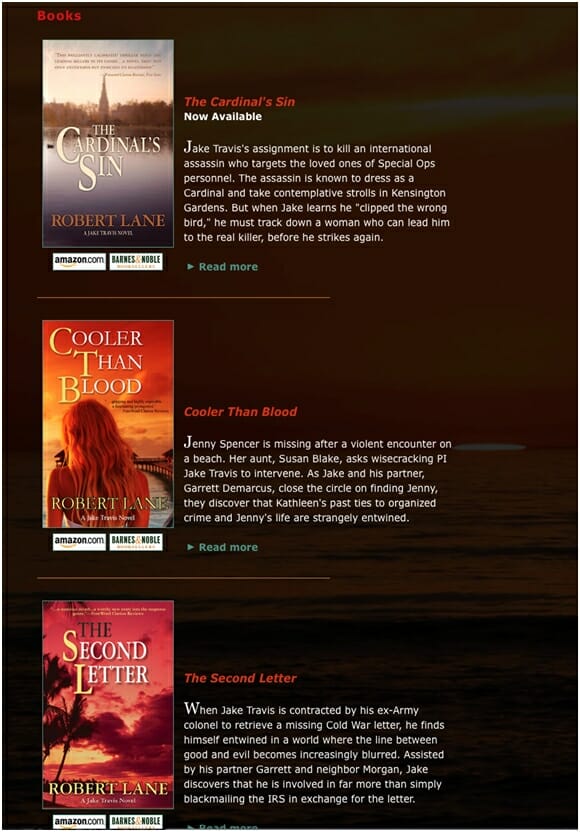
The next author website is an example of infinite scrolling. Tom Burgess has been establishing his platform for quite some time with two websites (FromHeretoProsper.org and TomBurgess.com) and by building his following on social media even though his book won’t be available until next year.
His book page looks like this:
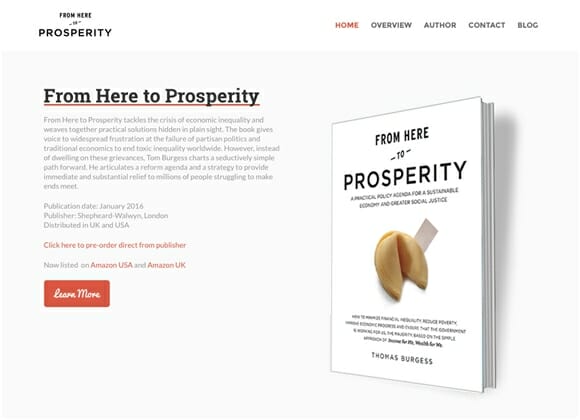
The red “learn more” button leads to an overview of the book with an email opt-in. Notice that the top taskbar (where you’ll find the home/overview/author/contact/blog/ tabs) is always visible on this infinite scrolling website.
Note: I had to reduce the size of the page to capture it into one screenshot.
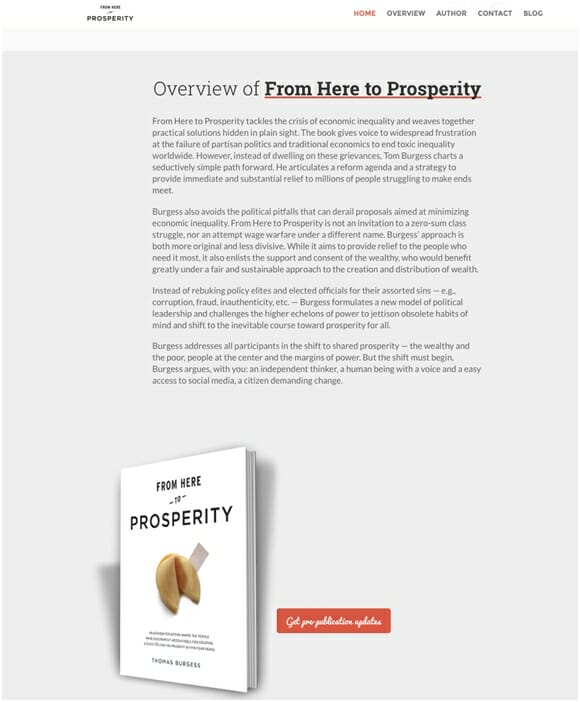
The popular Joanna Penn places the covers of all of her books on one page and hyperlinks each book individually to another page.
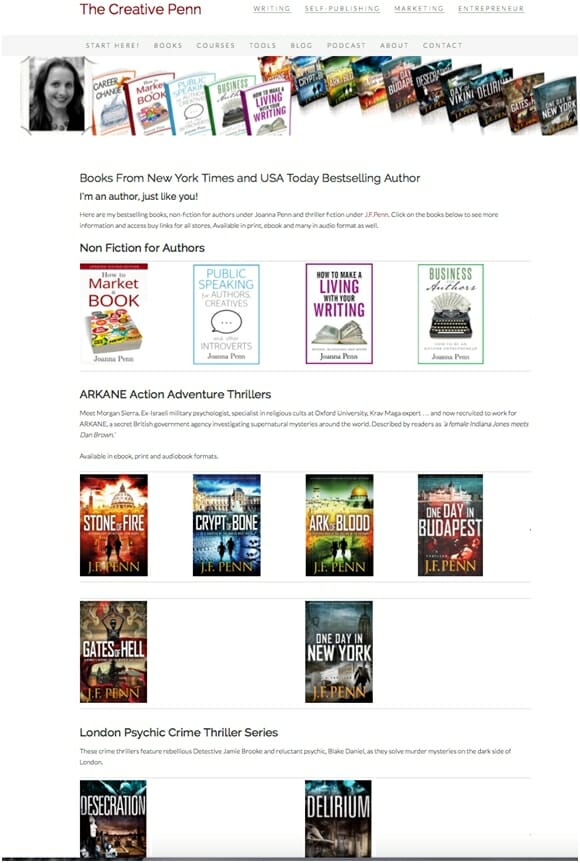
The pages about her novels have a darker feel to match her J.F. Penn thriller brand whereas the pages for her nonfiction books match the branding we see on her primary author website.
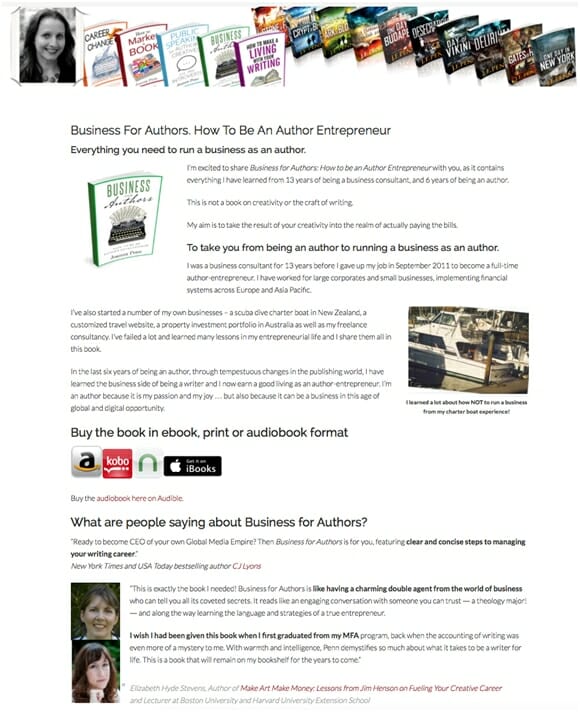
Now that you’ve seen these options, how do you know what’s right for you? Here are five suggestions:
- Your website must be mobile-friendly. If you want Google to recognize your website, it must meet this criterion.
- I’m a big believer in starting small. Build your author website and make sure it has these basic elements: a blog, a books page, an author page, a contact page, and an email opt-in on every page. You can add additional pages in the future.
- Include social media icons next to your blog and on every page of your website.
- Start your website as soon as possible and include a blog. (Don’t use Blogger or WordPress.com for your blog; host your blog on your website using a platform like WordPress.org and choose a WordPress theme specifically made for authors for your blog.)
I have two more pieces of advice:
- Your books page should include all of your titles. Include a brief description next to the title, one review and then include a link to a page devoted entirely to that book. This is what I do on my website. However, if you’re as prolific as Joanna Penn, follow her example.
- Use social media to engage with your readers and to drive traffic to your website, blog, and email opt-in.
If you follow these parameters, you’ll be well on your way to growing your readership.
Photo: bigstockphoto.com.



